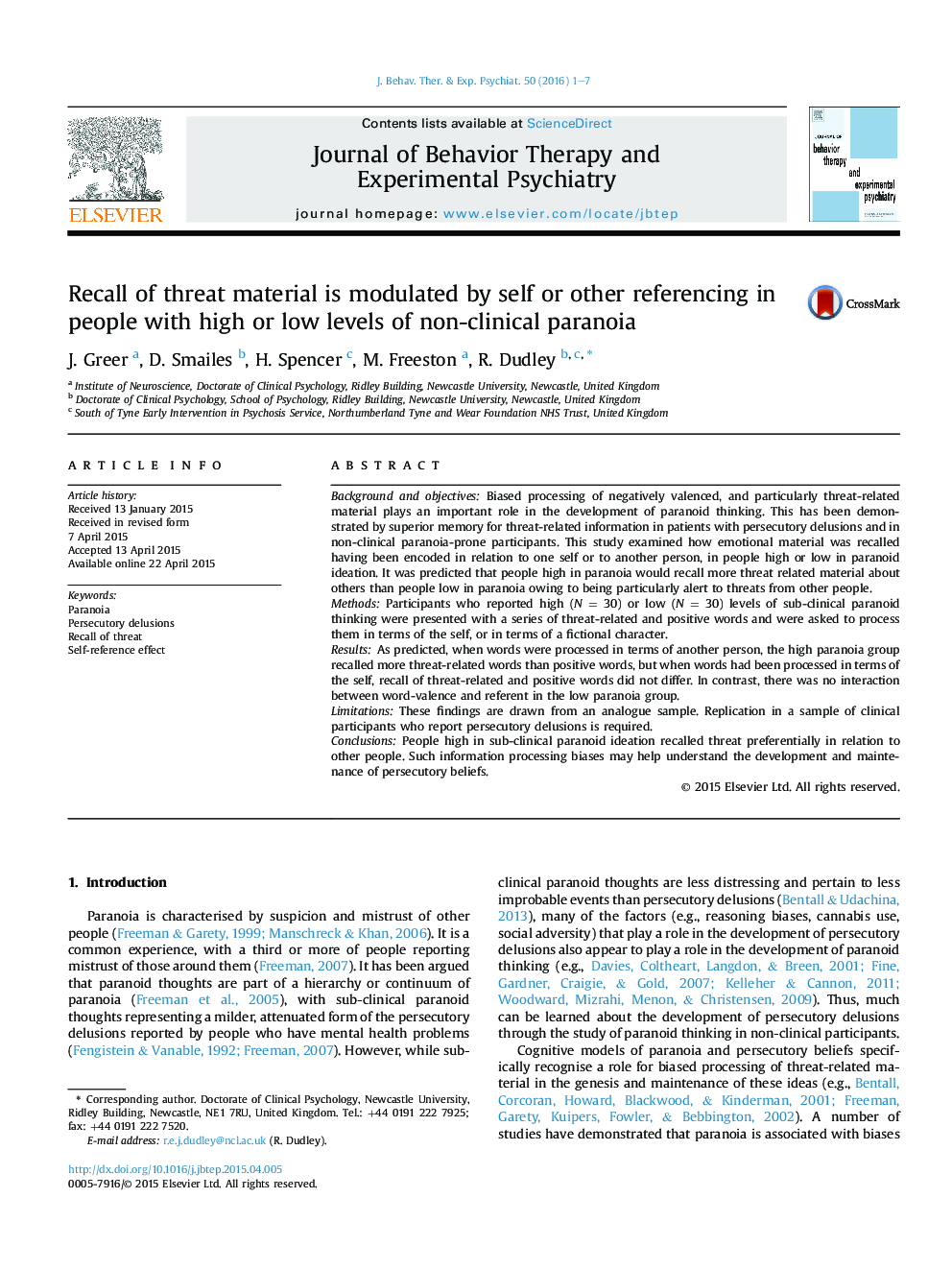| کد مقاله | کد نشریه | سال انتشار | مقاله انگلیسی | نسخه تمام متن |
|---|---|---|---|---|
| 910276 | 1473066 | 2016 | 7 صفحه PDF | دانلود رایگان |
• Biased processing of threat-related material is proposed to play an important role in the development of paranoid thinking.
• Previous research has shown greater recall of threat material by people with paranoia.
• Negative beliefs about others are characteristic of paranoia.
• Participants recalled threat or positive material processed in relation to the self or in relation to another person.
• People high in paranoid ideation recalled more threat material about others than positive material.
Background and objectivesBiased processing of negatively valenced, and particularly threat-related material plays an important role in the development of paranoid thinking. This has been demonstrated by superior memory for threat-related information in patients with persecutory delusions and in non-clinical paranoia-prone participants. This study examined how emotional material was recalled having been encoded in relation to one self or to another person, in people high or low in paranoid ideation. It was predicted that people high in paranoia would recall more threat related material about others than people low in paranoia owing to being particularly alert to threats from other people.MethodsParticipants who reported high (N = 30) or low (N = 30) levels of sub-clinical paranoid thinking were presented with a series of threat-related and positive words and were asked to process them in terms of the self, or in terms of a fictional character.ResultsAs predicted, when words were processed in terms of another person, the high paranoia group recalled more threat-related words than positive words, but when words had been processed in terms of the self, recall of threat-related and positive words did not differ. In contrast, there was no interaction between word-valence and referent in the low paranoia group.LimitationsThese findings are drawn from an analogue sample. Replication in a sample of clinical participants who report persecutory delusions is required.ConclusionsPeople high in sub-clinical paranoid ideation recalled threat preferentially in relation to other people. Such information processing biases may help understand the development and maintenance of persecutory beliefs.
Journal: Journal of Behavior Therapy and Experimental Psychiatry - Volume 50, March 2016, Pages 1–7
